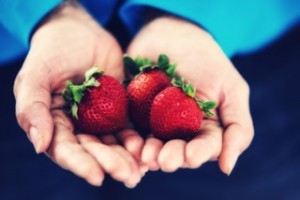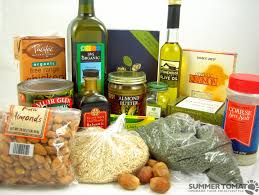 Many people think “healthy fats” is an oxymoron largely because fat was demonized in the eighties by many health professionals. Food manufacturers were quick to recognize opportunities to make huge profits and “low-fat” foods were created. The vilification of dietary fat is now suspected of contributing to the obesity epidemic partially because food manufacturers replaced fat with sugar, which comes with its own issues.
Many people think “healthy fats” is an oxymoron largely because fat was demonized in the eighties by many health professionals. Food manufacturers were quick to recognize opportunities to make huge profits and “low-fat” foods were created. The vilification of dietary fat is now suspected of contributing to the obesity epidemic partially because food manufacturers replaced fat with sugar, which comes with its own issues.
Furthermore, saturated fats were once believed to cause heart disease, thanks to a faulty study by Dr. Ancel Keyes, which was adopted by most health professionals as the word of dietary law. This motivated health conscious people to switch to vegetable oils. Now there is evidence that switching from saturated fats to polyunsaturated fats, common in processed vegetable oils, has contributed to higher rates of cancer.
One reason is that polyunsaturated oils are highly unstable and vulnerable to oxidation and turning rancid. Oxidation causes cancer. Oils that are rancid are highly toxic to humans (and pets. Sadly, most pet food is made using rancid fats).
To add to the danger, conventionally produced vegetable oils are processed using toxic chemicals like hexane, heptane, caustic soda, and other chemicals, the safety of which is unproven, to mask the rancid smell of processed oils.
In addition to the dangers of oxidation and rancidity, there are also concerns about the omega-6 content of polyunsaturated oils. A recent San Francisco study demonstrated that under laboratory conditions, omega-6 fatty acids could accelerate the growth of prostate tumor cells. They are also suspected of contributing to breast cancer in post-menopausal women.
Other studies show that improving the omega-3 to omega-6 ratio can lower the risk of certain cancers. Specific recommendations vary, but most experts suggest a ratio of between 1:1 and 1:4 at most. The average modern diet has an omega-3 to omega-6 ratio of 1:20 or more!
The rapid increase of vegetable oils in our diets during the past century is largely responsible for this imbalance. While some vegetable oils do contain small amounts of omega-3 fatty acids, for the most part, they consist of omega-6. Some experts recommend increasing omega-3 consumption, but it is more effective to reduce omega-6 intake, by eliminating or drastically decreasing polyunsaturated oil consumption, including canola, soy, corn, and sunflower oils.
Further compounding the unhealthy fat issue is the hydrogenation of vegetable oils. Hydrogenated oils and any foods made with them are the leading cause of heart disease and a major contributor to neurological disorders. Simply put, hydrogenated oils (or trans fats) are poison in the human body. They accelerate the buildup of plaque in the arteries and are suspected of causing cancer.
Food producers create hydrogenated oils for the convenience of food producers, primarily so that those foods taste good and can sit on the shelf for months without going bad. Therefore they significantly contribute to profits.
High-fat, low-fat, saturated fat, hydrogenated fats, polyunsaturated fats, omega 3, omega 6; it’s all very confusing. So what are we supposed to do?
First we need to recognize that healthy fats are an integral part of a complete diet. Avoiding fats actually causes chronic disease. Your brain is made of fat and it needs saturated fat. Even brain-friendly omega-3 fatty acids can’t be utilized without ample saturated fat. In addition, saturated fat facilitates nerve signals and hormone production. All of these systems rely on saturated fat to function, and to keep you healthy and ultimately, alive.
A diet rich in saturated fats protects your heart. Saturated fat reduces Lp(a), which is associated with increased risk for heart disease, and contributes to higher levels of HDL (good) cholesterol, which keep your heart healthy. In traditional cultures saturated fat was revered and even coveted as a source of vital energy.
Many nutrients are fat-soluble and failure to include healthy fats in meals results in many of the nutrients consumed not being absorbed by the body. Beta carotene, Vitamin D, and Vitamin E are three nutrients that require fat in order to be absorbed and used by the human body. We need saturated fat to transport calcium to our bones, which is why dairy products naturally contain both calcium and saturated fat. Calcium supplements don’t do much good if saturated fat is lacking in our diet. By consuming fats with nutritional supplements, the effectiveness of the phytonutrients in supplements multiplies.
It doesn’t take much fat to aid the absorption of important vitamins and nutrients. Eating just five or ten nuts, or one-fourth of an avocado, provides plenty of dietary fat for transporting nutrients and aiding their absorption.
Saturated fats also boost our immune systems because they contain specialized fatty acids, which are naturally antifungal, antimicrobial and antiviral. These important fatty acids include lauric acid, myristic acid and caprylic acid. A diet rich in these beneficial fats provides the body with essential building blocks to fight pathogenic substances.
It is vitally important to choose the right kind of fats for your diet and the right amount because fats are high in calories. Healthy fats include real butter, (ideally from grass-fed cows), virgin (meaning cold-pressed) coconut oil, extra-virgin olive oil, flax seed oil, hemp-seed oil and other fats from plant sources such as nuts, seeds, and avocados. These healthy fats should be consumed with every meal. Oils from fatty fish like wild salmon are also beneficial. Even the fat in beef can be called healthy if eaten in moderation and if those animals were grass-fed, not grain-fed.
It is advisable to give up cheap fats such as low-cost vegetable oils. To do so requires the abandonment of most processed foods as they are almost always made with cheap, usually hydrogenated, vegetable oils. Say good-bye to crackers, deep-fried foods, baked goods, indeed, the entire snack aisle of your local grocery store.
Healthy fats are more expensive than unhealthy fats but this is one case where spending extra money significantly protects your health.
Finally, use oils appropriately. For example, extra-virgin olive oil is ideal for salad dressings and dishes that will simmer because it has a low flash point (or temperature at which it begins to burn). Flax oil should never be heated. Butter, coconut oil and peanut oil can stand higher temperatures and are more appropriate for cooking at high temperatures. Ideally, it is best to give up fried foods, because all fried fats contain trans fatty acids.
Sadly most people are more careful about the condition of the oil in the engines of their cars than about the oils they consume to fuel their bodies. Changing your oil is an integral part of maintaining good health.
Sources for this article include: www.NaturalNews.com, www.Wikipedia.com, www.totalhealthbreakthroughs.com, www.alive.com





